Description
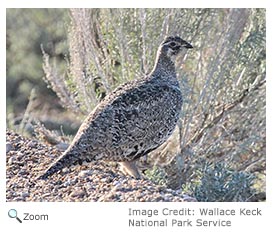 The greater sage grouse is the largest North American grouse species. They are 19-30 inches in length and two feet tall. Males are larger than females. Both the male and female greater sage grouse are brownish-gray with gray and white speckles. They have a black belly, a yellow comb over their eyes, and a long tail with stiff pointed feathers. The greater sage grouse is the largest North American grouse species. They are 19-30 inches in length and two feet tall. Males are larger than females. Both the male and female greater sage grouse are brownish-gray with gray and white speckles. They have a black belly, a yellow comb over their eyes, and a long tail with stiff pointed feathers.
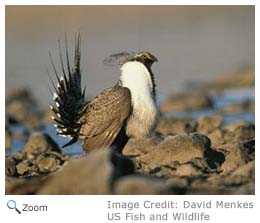 The male has a black bib on his throat, and a white chest. He also has yellowish air sacs on his breast that push his neck and chest feathers up when the air sacs are inflated. The male has a black bib on his throat, and a white chest. He also has yellowish air sacs on his breast that push his neck and chest feathers up when the air sacs are inflated.
Range
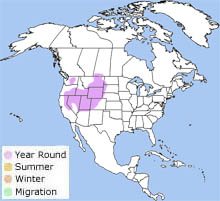 The greater sage grouse can be found from southern Alberta and Saskatchewan, Canada south to California, Nevada, Colorado and New Mexico. The greater sage grouse population has shrunk due to habitat loss and fragmentation, and it is a candidate for Endangered Species Act Protection by US Fish and Wildlife. The greater sage grouse can be found from southern Alberta and Saskatchewan, Canada south to California, Nevada, Colorado and New Mexico. The greater sage grouse population has shrunk due to habitat loss and fragmentation, and it is a candidate for Endangered Species Act Protection by US Fish and Wildlife.
Habitat
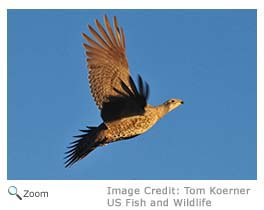 The greater sage grouse makes its home on open plains and sagebrush plains. The greater sage grouse makes its home on open plains and sagebrush plains. |
|
Diet
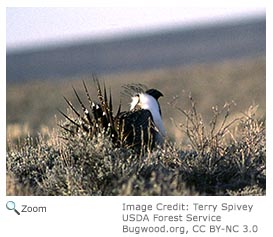 In the winter, most of the sage grouse's diet is made up of the leaves and shoots of the sagebrush. In the spring, the greater sage grouse also eats weeds and grasses. In the winter, most of the sage grouse's diet is made up of the leaves and shoots of the sagebrush. In the spring, the greater sage grouse also eats weeds and grasses.
Life Cycle 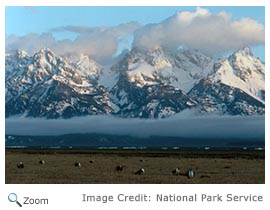 During mating season, male sage grouses gather on a lek or a special display area. While they are there, they strut and display their plumage to attract a mate. During mating season, male sage grouses gather on a lek or a special display area. While they are there, they strut and display their plumage to attract a mate.
The female lays 6-9 eggs in a depression in the ground lined with grass. The nest is usually under a bush or other cover. The female incubates and cares for the chicks.
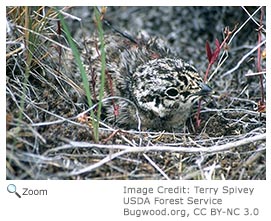 The chicks hatch in about three weeks and feed themselves soon after hatching. They eat insects for the first few weeks but soon move on to weeds, grasses, and sagebrush. The chicks fledge in about a week. The chicks hatch in about three weeks and feed themselves soon after hatching. They eat insects for the first few weeks but soon move on to weeds, grasses, and sagebrush. The chicks fledge in about a week.
Behavior
The greater sage grouse doesn't have a muscular gizzard with grit in it, and it can't digest hard foods like seeds.
|

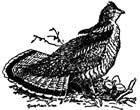


 The greater sage grouse can be found from southern Alberta and Saskatchewan, Canada south to California, Nevada, Colorado and New Mexico. The greater sage grouse population has shrunk due to habitat loss and fragmentation, and it is a candidate for Endangered Species Act Protection by US Fish and Wildlife.
The greater sage grouse can be found from southern Alberta and Saskatchewan, Canada south to California, Nevada, Colorado and New Mexico. The greater sage grouse population has shrunk due to habitat loss and fragmentation, and it is a candidate for Endangered Species Act Protection by US Fish and Wildlife. 


